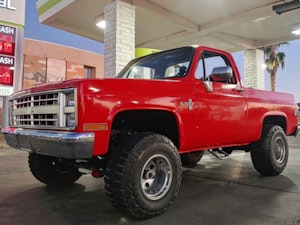Media | Articles
In the beginning, BMW made the Dixi
The half-Italian, half-Austrian financer Camillo Castiglioni was the richest man in all of Central Europe—the wealthiest who wasn’t a royal—and he was an airplane enthusiast, riding the wave of enthusiasm that encompassed cutting-edge technology. In the first few decades of the 1900s he invested in airplane production, got rich, went bankrupt, got rich again, designed and flew his own balloons, threw money at artists he liked, and owned dozens of companies, including Rapp Motorwerke and Bayerische Flugzeugwerke, the two companies which he merged to become BMW in 1922.
When World War I erupted, BMW built the IIIa engine: a high-compression inline-six that helped the Fokker D.VII, already one of the war’s best fighter planes, soar even higher while consuming less fuel. So strong were the engines that in 1919, after war’s end, one modified IIIa sent pilot Franz Zeno Diemer to an unofficial altitude record of 32,000 feet.
The Treaty of Versailles limited airplane production for Germany, a problem for airplane engine makers. So BMW diversified. It built farm equipment, industrial engines, office furniture. In 1921, it began to produce motorcycles. It still wasn’t enough. Castiglioni returned, did some business, made some deals, performed some more mergers.
20180307152817)
In Eisenach, Eastern Germany, under the shadow of Wartburg Castle, Automobilwerk Eisenach had been building cars in its eponymous city since 1898. By 1903, the company was renamed Dixi, a Latin conjugation that meant “to speak.” World War I destroyed the company, financially and mostly literally: the Werke had once built grand, tall, plush touring cars, but now turned to something smaller. And in 1927 it introduced something new: the Dixi DA-1 3/15, a license-built copy of the Austin Seven.
Marketplace
Buy and sell classics with confidence
Hard to imagine now, but the cute, fuddy-duddy little Austin Seven was, in fact, a revolution: small, cheap, yet well-built. It was England’s answer to the Ford Model T and it put the country to motoring with 375,000 built. Companies in France and Australia built it under license. In America, the aptly-named American Austin Car Company sold ’em with fun, cutesy big-car restyling, shrunken Stutzes and Marmons that looked truly cartoonish. Not only was the Dixi BMW’s first car but also Datsun’s, half a world away (though they may or may not have consulted with Austin before they started building it. The debate continues). By the 1950s, however, both companies had sorted it out.
Both Bruce McLaren and Colin Chapman recognized the potential, building their first race cars from Sevens. It ended up working out pretty well for them.
In 1928, Castiglioni and BMW signed a deal to buy the Eisenach factory. The car was renamed the BMW Dixi, and a year later it shed the moniker for good. BMW renamed it the DA-1 3/15 PS, which stood for Deutsche Ausführung (German Version) One, and the 3/15 represented three speeds and 15 actual horsepower from the 748-cc four-cylinder engine. BMW sold 25,000 examples, both in convertible and sedan form, finally ending production in 1931.
20180307152930)
When BMW introduced a replacement in 1932, the renamed 3/20 was larger in every dimension, had a 788-cc engine, five more horsepower, four-wheel independent suspension, a stronger backbone chassis, and a choice of six total body styles. And it had one thing that neither the Austin nor the Dixi had: the blue and white roundel, right on the grille. (But no kidneys—that would debut on the larger 303 model that same year.)
After World War II, the Eisenach story became much more interesting. The Soviets occupied the factory; for a few years, it still built the same prewar BMW cars and motorcycles. Copyright laws could travel more freely than your average East German, though, so after a lawsuit the Eisenacher Motorenwerk changed its logo to red and white, and its name to…EMW. (This is not to be confused with ZMW, Serbia’s Zastava Motor Works that Malcolm Bricklin sought to foist upon Americans back in 2002.)
Eastern Bloc car spotters will recognize the Eisenach factory as the future home of the Wartburg marque, revived in 1956. BMW’s first car after the war debuted in 1952, the same year as that lawsuit—the 501, a swoopy luxury car which was known rather poetically as the “Baroque Angel.” It was the first car from Bavarian Motor Works to actually be built in Bavaria.
20180307152807)
So, to recap: the first BMW was British in origin, was built not in Bavaria but in Eisenach, and it didn’t even have the roundel badge on it or the kidney grilles. But legends always start small.
20180307152856)









